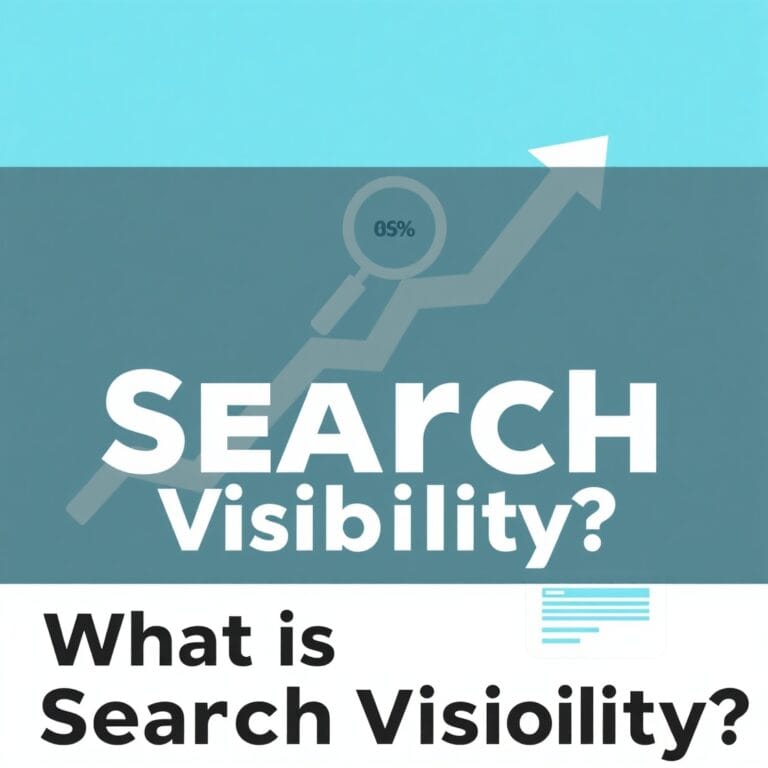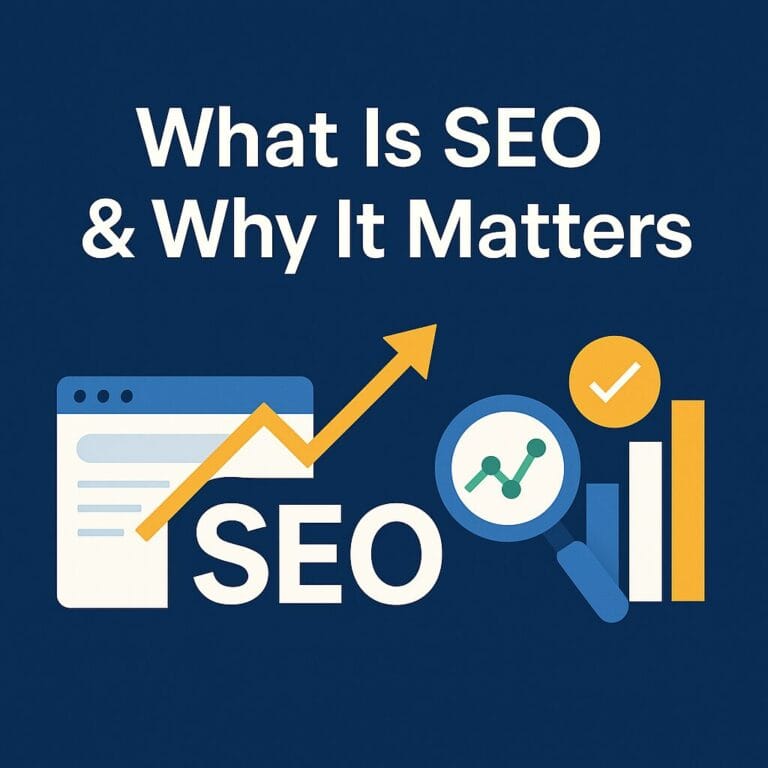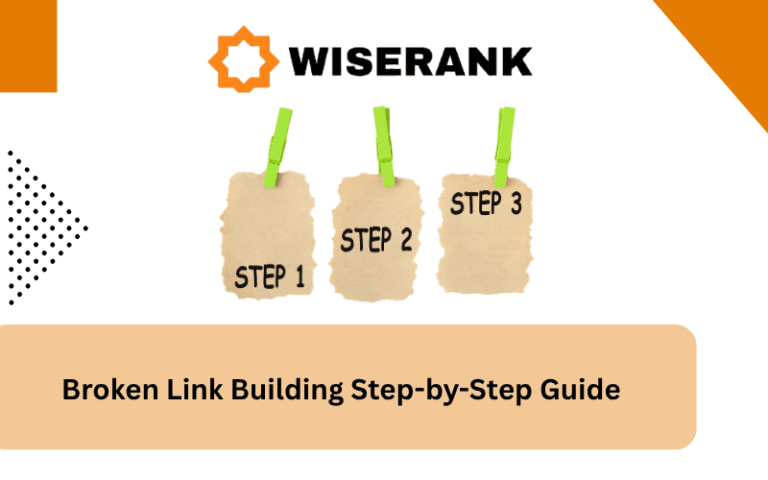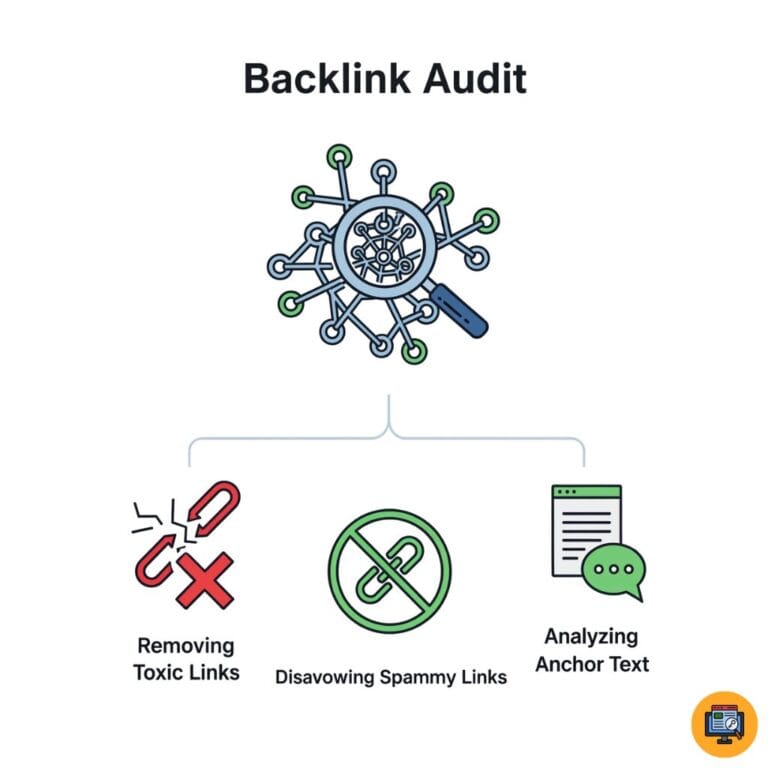What Are Meta Descriptions and Why They Matter?
Meta descriptions are short summaries that appear below your page title in search results. They tell searchers what your page contains and why they should click your result instead of the nine others on the page.
While meta descriptions do not directly affect search rankings, they significantly impact click-through rates. Higher click-through rates send positive signals to Google and bring more organic traffic to your site even without ranking improvements.
How Meta Descriptions Impact Click-Through Rate
Your meta description is a sales pitch competing for attention in crowded search results. Well-written descriptions convince users that your page provides exactly what they need.
Studies show that pages with compelling meta descriptions can double or triple click-through rates compared to poorly written or missing descriptions. This traffic increase happens without changing rankings, making meta description optimization one of the highest ROI SEO activities.
How Google Uses Meta Descriptions: The Algorithm Explained
Google reads your meta description but does not always use it. The search engine decides whether to show your written description or create its own version from your page content. Google pulls text from your page when it thinks that content better matches what someone searched for. This happens in about 30 percent of searches. You can increase the chances Google uses your meta description by making it relevant and accurate.
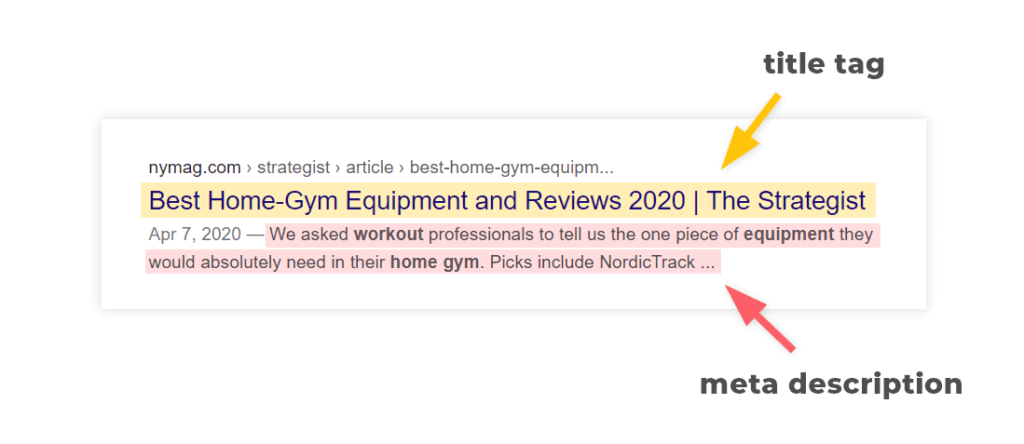
Understanding the Character Limit
Google typically displays 150-160 characters of meta descriptions on desktop and about 120 characters on mobile devices. Anything longer gets cut off with ellipses.
The ideal length balances providing enough information to be compelling while ensuring your full message displays on both desktop and mobile search results.
Desktop vs Mobile Display Differences
Desktop search results show more characters allowing slightly longer descriptions, while mobile displays truncate sooner requiring more concise messaging that front-loads important information.
What Happens When Descriptions Are Too Long
Google cuts off descriptions exceeding the character limit with three dots, hiding your closing call to action or important information that appears at the end.
Can Descriptions Be Too Short
Very short descriptions under 50 characters waste valuable space and provide insufficient information for users to judge whether your page meets their needs.
When Google Rewrites Your Meta Description?
Google does not always use the meta description you write. The search engine creates its own description in about 30 percent of searches by pulling text from your page content.
Google rewrites descriptions when they do not match the search query well, seem low quality or spammy, are missing entirely, or when Google finds better matching text on your page.
Increasing the Odds Google Uses Your Description
Write descriptions that accurately represent page content, include variations of your target keyword, match common search queries for your topic, and provide clear value that answers user questions.
Why Rewrites Are Not Always Bad
Sometimes Google creates better descriptions for specific queries by pulling exact text matching what users searched for, potentially improving click-through rates for those particular searches.
Essential Elements of High-Converting Meta Descriptions
Effective meta descriptions combine several elements that work together to convince searchers to click your result over competitors.
The best descriptions include keywords, clear benefits, calls to action, and accurate representations of page content without misleading users.
Including Your Target Keyword
Place your primary keyword naturally in the meta description because Google bolds keywords matching the search query, creating visual emphasis that catches attention and shows users your page is relevant.
Communicating Clear Value
Tell users exactly what benefit they get from clicking including what problem you solve, what they will learn, what action they can take, or what unique value you provide compared to other results.
Adding Compelling Calls to Action
Include action words that encourage clicking such as “discover,” “learn,” “find out,” “get,” or “try” that create momentum and tell users what to do next.
Matching Search Intent
Align your description with what users actually want when searching by understanding whether they seek information, want to buy something, need to compare options, or are looking for a specific website.
Crafting Meta Descriptions for Different Content Types
Different page types require different meta description approaches based on their purpose and what users expect to find.

Blog Post Meta Descriptions
Blog descriptions should promise specific knowledge or solutions, include the main benefit or takeaway, use question-based keywords when relevant, and create curiosity without being clickbait.
Product Page Descriptions
E-commerce descriptions need product name and key features, unique selling points or benefits, price or discount information when relevant, and clear calls to action like “buy now” or “shop.”
Service Page Descriptions
Service descriptions should explain what you offer, highlight key benefits or results, include location for local services, and mention credentials or experience when relevant.
Homepage Descriptions
Homepage descriptions must introduce your brand, explain what you do clearly, target your main business keywords, and appeal to your broad target audience.
Optimize Beyond Meta Descriptions with Complete On-Page SEO
While crafting compelling meta descriptions can significantly improve your click-through rates, they’re just one part of a broader on-page SEO strategy. Effective on-page optimization involves improving every element of your website, from title tags, headings, and internal linking to page speed and content structure. If you want to maximize your website’s visibility and user engagement, investing in professional on-page SEO services can make all the difference. Our on-page SEO process ensures that every page on your site is fully optimized for both search engines and readers, helping you achieve higher rankings and more consistent organic traffic.
Proven Meta Description Formulas
Certain description structures consistently generate higher click-through rates across industries and content types.
These formulas provide starting points you can customize for your specific pages and audiences.
The Benefit-Focused Formula
Structure: “Learn how to [achieve desired result]. [Key benefit]. [Call to action].”
Example: “Learn how to write meta descriptions that get clicks. Proven tips and real examples. Start improving your CTR today.”
The Problem-Solution Formula
Structure: “[Problem statement]. Discover [solution]. [Benefit or result].”
Example: “Low click-through rates hurting your traffic? Discover proven meta description strategies. Get more clicks without better rankings.”
The Question-Answer Formula
Structure: “[Question matching search query]? [Brief answer preview]. [Call to action].”
Example: “What is the ideal meta description length? Get the exact character limits plus optimization tips. Read the complete guide.”
The List-Based Formula
Structure: “[Number] ways to [achieve goal]. [Quick benefit statement]. [Call to action].”
Example: “7 proven ways to write meta descriptions that convert. Simple formulas and real examples. Improve your CTR now.”
Power Words That Boost Click-Through Rates
Certain words trigger emotional responses and curiosity that increase clicking behavior in search results.
Using power words strategically makes descriptions more compelling without resorting to clickbait or misleading tactics.
Action Words That Drive Clicks
Strong action verbs include discover, learn, find, get, unlock, master, boost, increase, improve, create, build, achieve, and start that create momentum and promise results.
Emotional Trigger Words
Words that spark curiosity or desire include proven, easy, simple, quick, complete, ultimate, essential, powerful, effective, best, top, and exclusive.
Using Urgency Without Clickbait
Create honest urgency with updated for 2025, new research, latest strategies, recent changes, or current trends without false scarcity or exaggeration.
Common Meta Description Mistakes to Avoid
Many websites sabotage their click-through rates with preventable meta description errors that reduce effectiveness.
Understanding these mistakes helps you write better descriptions that actually drive clicks.
Critical Errors That Hurt CTR
Avoid these damaging practices:
- Duplicating the same description across multiple pages
- Writing generic descriptions that could apply to any page
- Stuffing keywords unnaturally throughout the description
- Making promises your page content does not deliver
- Using special characters that display incorrectly
- Forgetting to write descriptions for important pages
- Copying content directly from the page without optimization
Clickbait vs Compelling Copy
Compelling descriptions accurately preview page content while creating interest, whereas clickbait makes false or exaggerated promises that increase bounce rates when users realize content does not match expectations.
The Duplicate Description Problem
Using identical descriptions across pages wastes opportunities to differentiate content, confuses users about which page to visit, and provides no reason to click one result over another from your own site.
Writing Meta Descriptions for Mobile Users
Mobile search now dominates most industries, making mobile-optimized descriptions essential for capturing the majority of potential traffic.
Mobile displays show fewer characters and require more concise, front-loaded messaging.
Mobile Character Limits
Mobile devices typically display only 120 characters before truncating descriptions, requiring you to place the most important information and keywords in the first half of your description.
Front-Loading Key Information
Put your primary keyword, main benefit, and value proposition in the first 120 characters ensuring mobile users see your complete message even when the ending gets cut off.
Testing Mobile Appearance
Use SERP preview tools, test on actual mobile devices, check how descriptions display on different screen sizes, and ensure truncated versions still make sense and compel clicks.
Integrating Keywords Naturally
Keywords in meta descriptions get bolded in search results when they match user queries, creating visual emphasis that attracts attention.
Natural keyword integration improves relevance signals without creating awkward, keyword-stuffed descriptions that repel users.
Primary Keyword Placement
Include your main target keyword naturally in the description, preferably in the first half, using variations when appropriate, and avoiding repetition that sounds spammy.
Secondary Keyword Opportunities
Use related keywords and variations throughout the description to match different search queries, cover semantic variations, and demonstrate comprehensive topic coverage.
Avoiding Keyword Stuffing
Never repeat keywords excessively, force keywords where they do not fit naturally, sacrifice readability for keyword inclusion, or create unnatural phrasing just to include more keywords.
Testing and Improving Meta Descriptions
Meta description optimization is ongoing work that improves through testing and refinement based on actual performance data.
Systematic testing reveals which approaches work best for your specific audience and content.
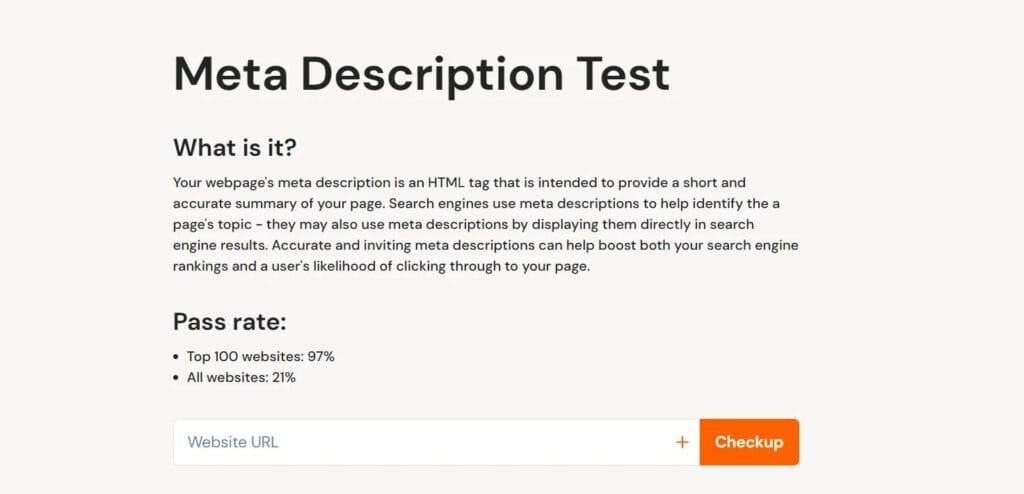
Using Google Search Console Data
Track impressions and clicks for each page, calculate click-through rates by position, identify pages with low CTR for their ranking, and find opportunities where better descriptions could increase traffic.
A/B Testing Descriptions
Change descriptions on underperforming pages, monitor CTR changes over several weeks, test different formulas and approaches, and keep successful versions while refining failures.
Monitoring Performance Metrics
Watch for click-through rate improvements, track traffic increases from better CTR, measure engagement after users click, and correlate description changes with conversion rates.
Industry-Specific Meta Description Strategies
Different industries and niches benefit from customized description approaches based on their unique audiences and search behaviors.
E-commerce Meta Descriptions
Product descriptions should include product name and category, key features or specifications, price or discount when competitive, stock status or urgency signals, and clear purchase-focused calls to action.
Local Business Descriptions
Local service descriptions need location information, service types offered, unique selling points, contact information when space allows, and local-focused keywords.
B2B Meta Descriptions
Business-to-business descriptions should target decision-makers, emphasize ROI or business benefits, use industry terminology, mention credentials or experience, and focus on professional outcomes.
Meta Description Tools and Resources
Several tools help you write, test, and optimize meta descriptions more effectively.
Using the right tools streamlines the optimization process and provides data for informed decisions.
SERP Preview Tools
Yoast SEO and Rank Math provide real-time previews, standalone SERP simulators show mobile and desktop displays, browser extensions preview while you write, and testing tools ensure proper display across devices.
Character Counting Tools
Built-in counters in SEO plugins, online character counting tools, and word processors with character count features help you stay within limits while maximizing impact.
Performance Tracking
Google Search Console shows real performance data, rank tracking tools monitor CTR by position, analytics platforms measure traffic impact, and A/B testing tools compare description variations.
Your Meta Description Optimization Action Plan
Start improving your meta descriptions systematically by auditing existing pages through Google Search Console to find pages with low CTR relative to their position.
Prioritize updates for high-impression pages ranking on page one with underperforming CTR, important conversion pages getting visibility, and pages ranking 4-10 where better CTR could push you higher.
Write new descriptions using proven formulas including target keywords naturally, clear value propositions and benefits, compelling calls to action, and accurate page previews that match content.
Test and monitor results by tracking CTR changes after updates, measuring traffic improvements, testing different approaches, and refining based on what works for your audience.
Remember that meta descriptions require ongoing optimization as you publish new content, update existing pages, and discover what resonates with your specific audience through continuous testing and improvement.


